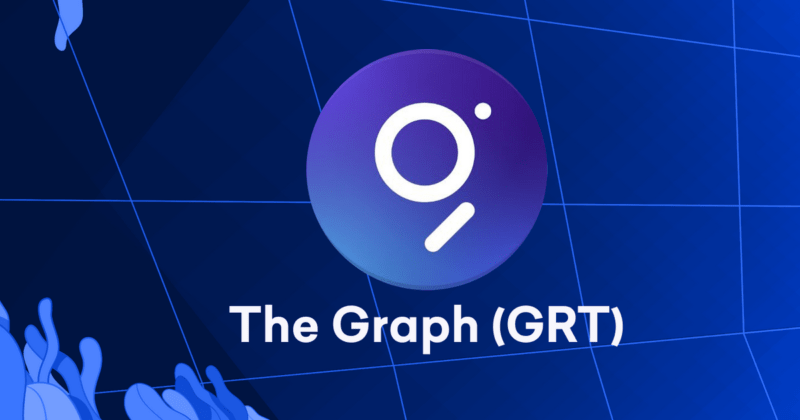Hello, crypto enthusiasts! Today, we’re looking at GRT, the native token of The Graph network. This network is a decentralized protocol for indexing and querying data from blockchains, starting with Ethereum.
Understanding GRT
GRT, or Graph Token, plays a pivotal function in the network’s operation. It’s used to coordinate work among network participants who provide indexing and curation services. By staking GRT, indexers, curators, and delegators can earn query fees and inflation rewards.
Why GRT Stands Out
- It enables efficient data access, benefiting dApps and users alike.
- It incentivizes a globally distributed network of indexers to operate a robust and decentralized infrastructure.
In the ever-evolving crypto landscape, GRT and The Graph are worth keeping an eye on. Stay tuned for more insights!
The Graph Network: A Comprehensive Overview
The Graph Network, a significant player in the cryptocurrency world, was launched in October 2018. The brains behind this innovative project are a team of skilled developers led by Yaniv Tal, Jannis Pohlmann, and Brandon Ramirez.
Features of The Graph Technology
- Indexing and Query Layer: The Graph operates as an indexing and query layer blockchain, facilitating efficient data access for networks like Ethereum and IPFS.
- Open-Source Protocol: Being an open-sourced protocol, it encourages developers worldwide to create and publish APIs, called subgraphs, making data readily available.
- Decentralization: The Graph’s decentralized nature ensures that data is not controlled by a single entity, thereby enhancing security and reliability.
- Token Economics: The Graph’s native token, GRT, plays a critical part in the network’s economy. It is used for curation, delegation, and transaction fees.
- Scalability: By allowing developers to build subgraphs, The Graph enables dApps to scale and provide users with a seamless experience.
The Graph’s Role in the Crypto Ecosystem
The Graph’s unique approach to data indexing and querying sets it apart in the crypto ecosystem. Its technology empowers developers, fosters decentralization, and enhances the scalability of dApps, making it an invaluable asset in the ever-evolving world of cryptocurrencies.
The Graph (GRT): Advantages and Disadvantages
Advantages
- Scalability: The Graph has a high level of scalability. It allows developers to access data across many different blockchains, ensuring smooth operation even when there is a surge in transactions.
- Security: The Graph is designed to protect data integrity. It uses a decentralized network of indexers to secure data, which makes it hard for malicious actors to manipulate the information.
- Decentralization: The Graph is profoundly decentralized. It operates on the Ethereum network, which means it’s not controlled by a single entity – promoting transparency and reducing the risk of censorship.
Disadvantages
- Scalability: While The Graph shows promise, it’s still a relatively new project. As with any new platform, it may face scalability issues as it grows, potentially resulting in slower transaction times and higher fees.
- Security: Despite taking measures to ensure data integrity, the security level of The Graph depends on the solidity of the Ethereum network. Any vulnerability in Ethereum could potentially impact The Graph.
- Decentralization: While decentralization has its benefits, it also means that if something goes wrong, the problem is harder to fix, as there’s no central authority to intervene. Additionally, the reliance on Ethereum’s network could pose significant issues if Ethereum faces challenges.
Understanding the Role of GRT in The Graph Ecosystem
The Graph is a decentralized protocol for indexing and querying data from blockchains, starting with Ethereum. The Graph Token (GRT) plays a pivotal function in this ecosystem, serving as the native digital asset that facilitates the network’s functions.
Governance and Curating
One of the primary uses of GRT is governance. Token holders can participate in decisions about the network’s operation, such as deciding which subgraphs to curate and which curators to delegate to. This participatory aspect helps ensure the network remains secure, decentralized, and efficient.
Staking
In addition to governance, GRT is used for staking. Indexers (those who run nodes) must stake GRT to provide querying and indexing services. This incentivizes honest behavior, as staked tokens can be slashed for dishonest actions. Similarly, Delegators (those who delegate their tokens to Indexers) also earn a portion of the query fees and inflation rewards.
Total Number of GRT Tokens
The total supply of GRT is 10 billion tokens. These tokens are distributed among various network participants, including the community, Indexers, Delegators, and the Graph Foundation, which supports the development and adoption of The Graph.
Where to Buy GRT
Interested in participating in The Graph ecosystem? You can purchase GRT on various exchanges, including Binance, Coinbase, and Uniswap. As always, make sure to do your own research before making any investment decisions.
The Graph Ecosystem: Development Prospects with Increasing Usage
As we delve into the world of cryptocurrencies, one project that has been gaining significant attention is The Graph. This decentralized protocol for indexing and querying data from blockchains is showing promising development prospects with its increasing usage.
Understanding The Graph
The Graph is essentially a global API (Application Programming Interface) that enables developers to build serverless dApps (decentralized applications) that can efficiently access blockchain data. It’s like Google for blockchains, making data easily accessible.
Increasing Usage and Development Prospects
With the growing number of dApps and blockchain networks, the demand for efficient data indexing and querying solutions is surging. Here’s where The Graph shines.
- Scalability: As more projects use The Graph, its network effects strengthen, leading to improved scalability.
- Decentralization: Increased usage leads to more node operators, enhancing the network’s decentralization.
- Ecosystem Growth: More developers building on The Graph mean more dApps, tools, and services, fostering ecosystem growth.
Challenges and Opportunities
While the prospects look promising, challenges like data accuracy, security, and network congestion need to be addressed. However, these challenges also present opportunities for improvement and innovation.
In conclusion, with the increasing usage of The Graph, we can expect a more robust, scalable, and decentralized ecosystem. As a crypto trader, keeping an eye on such development trends can offer useful understandings for investment decisions.
Conclusion: The Graph Technology and GRT Coin
The Graph technology, an indexing protocol for querying networks like Ethereum, has shown significant potential. Its ability to organize and efficiently access blockchain data is a game-changer. This could potentially revolutionize the way we interact with decentralized applications (DApps), making them more accessible and user-friendly.
Advisability of Investing in GRT Coin
Investing in the GRT coin, the native token of The Graph, is a decision that should be made with careful consideration. On one hand, the unique use case and growing adoption of The Graph within the DeFi space suggest a positive outlook. On the other hand, like all cryptocurrencies, it’s subject to market volatility and regulatory uncertainties.
Pros:
- Unique use case in the growing DeFi space
- Strong backing from reputable projects like Coinbase and DApps
- Potential for increased demand as more DApps are developed
Cons:
- High market fluctuation
- Regulatory uncertainties surrounding cryptocurrencies
- Potential competition from other similar projects
In conclusion, while the potential of The Graph technology and the GRT coin is promising, potential investors should conduct thorough research and consider their risk tolerance before making investment decisions. As always, it’s recommended to diversify your portfolio and not invest more than you can afford to lose.

